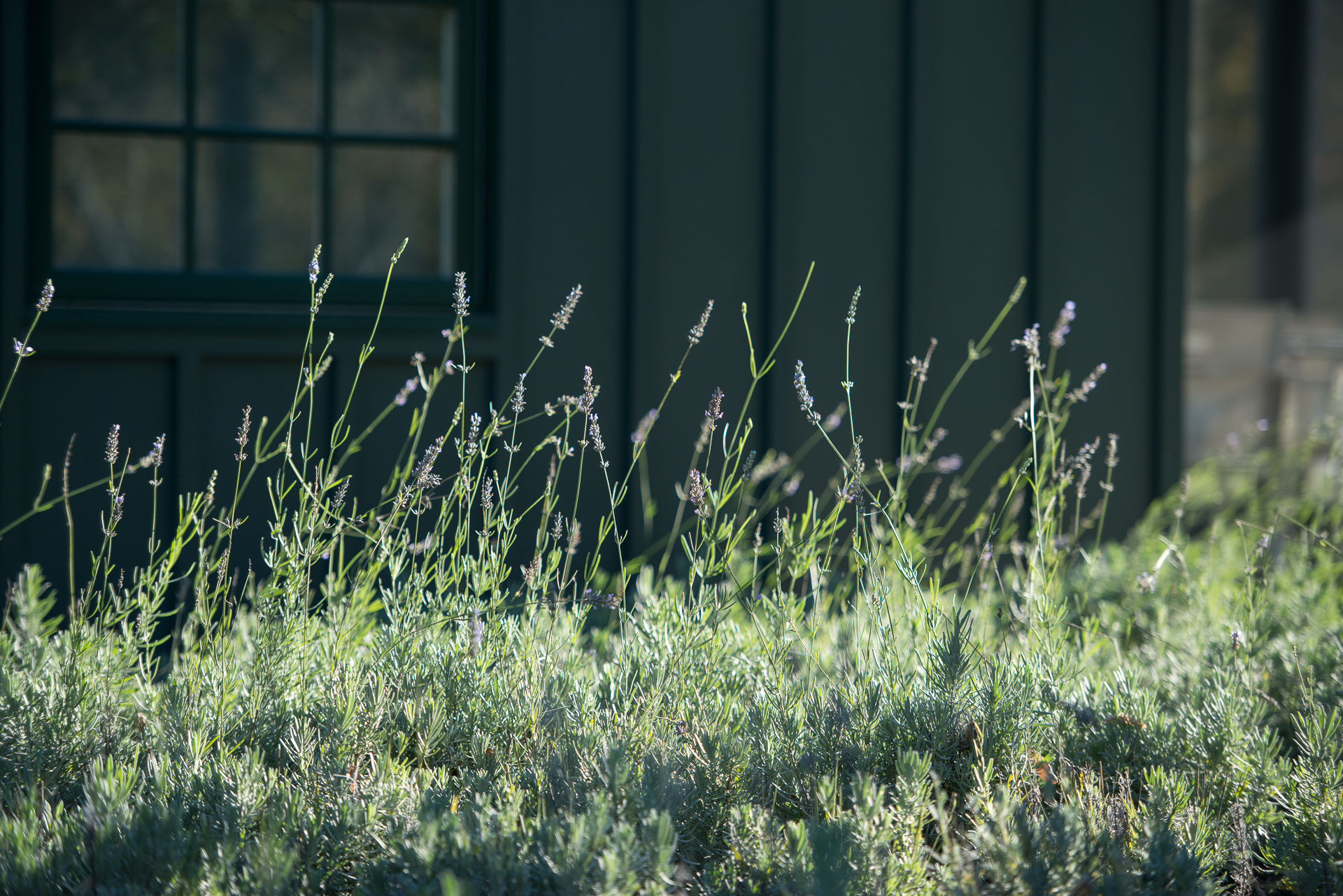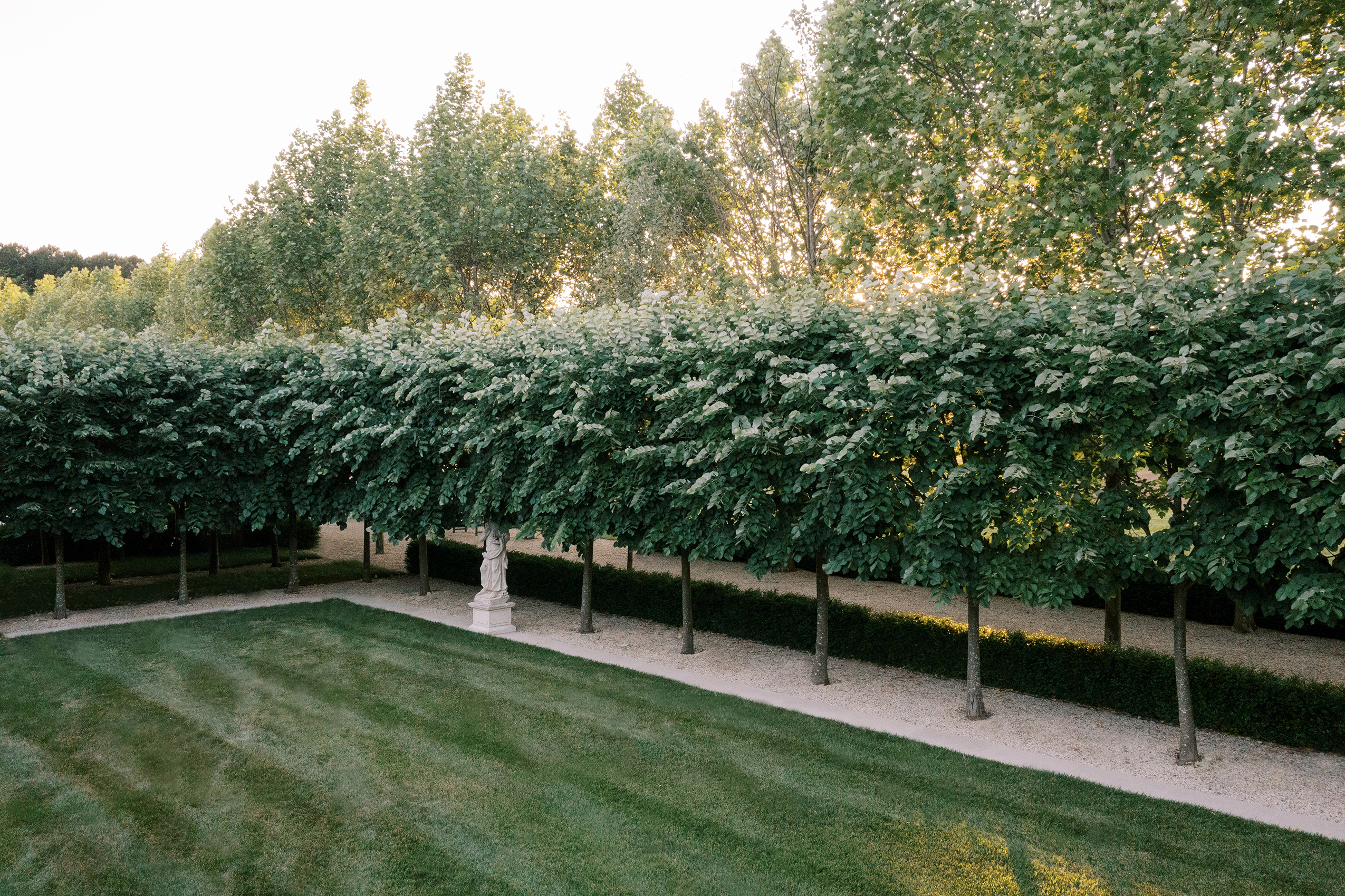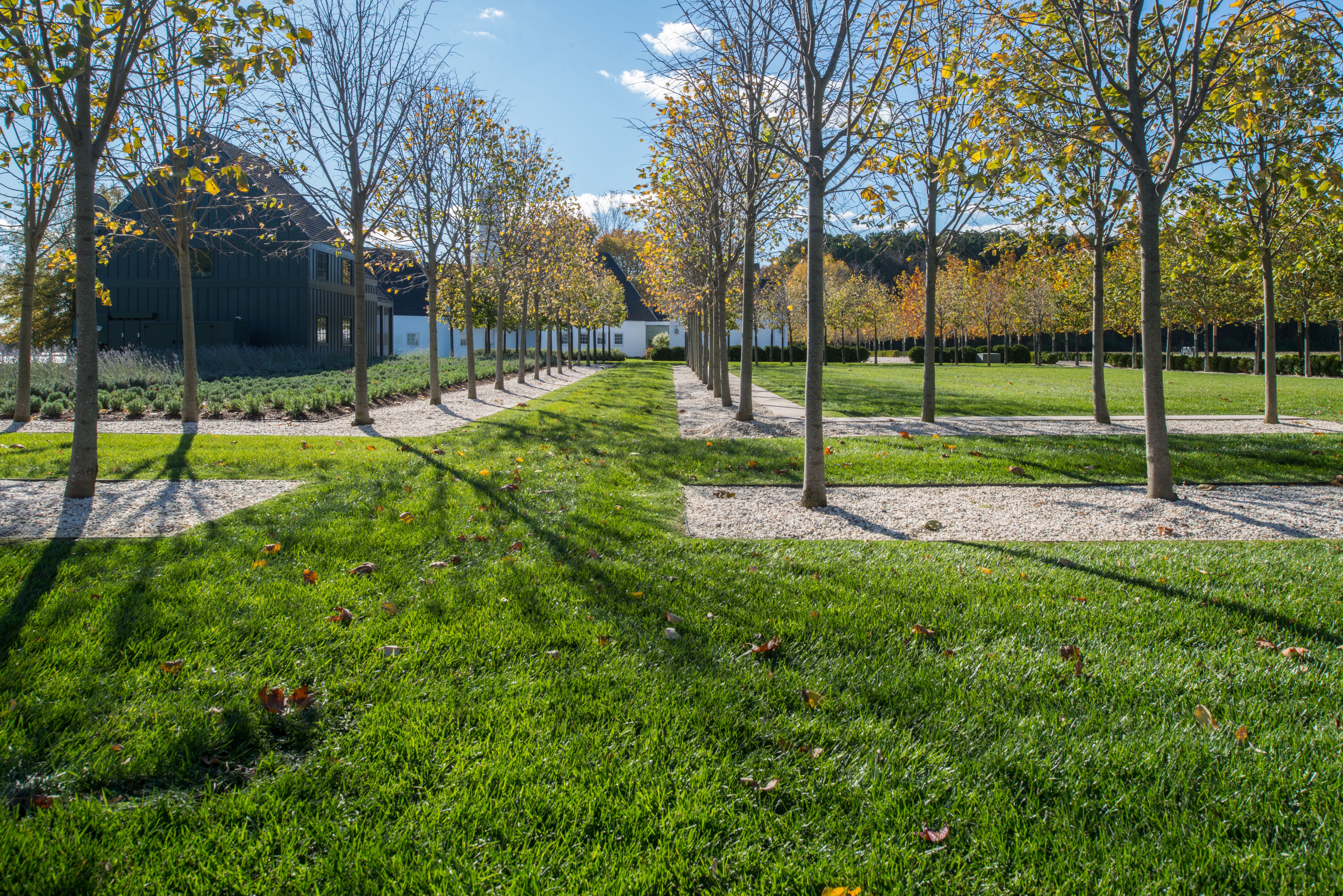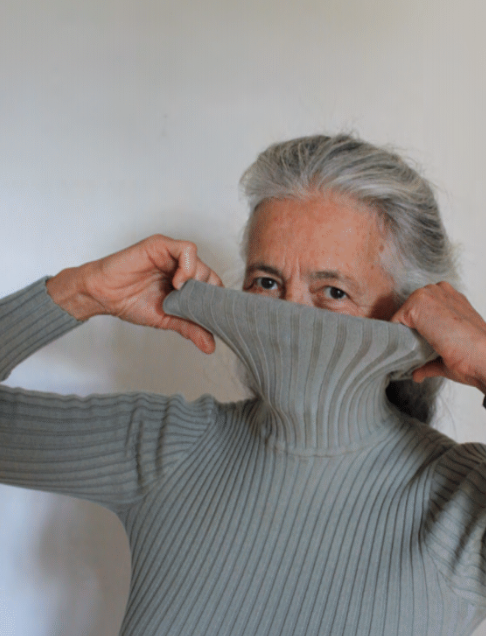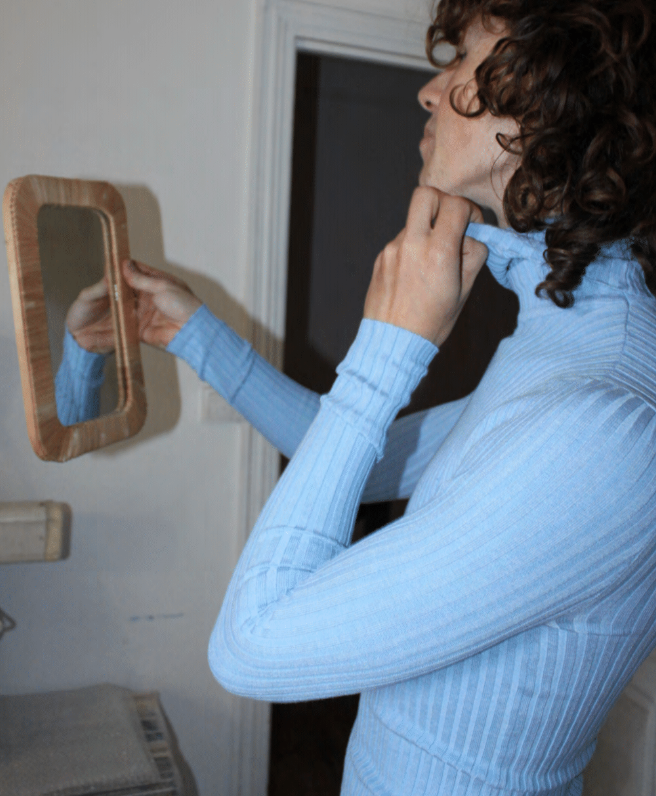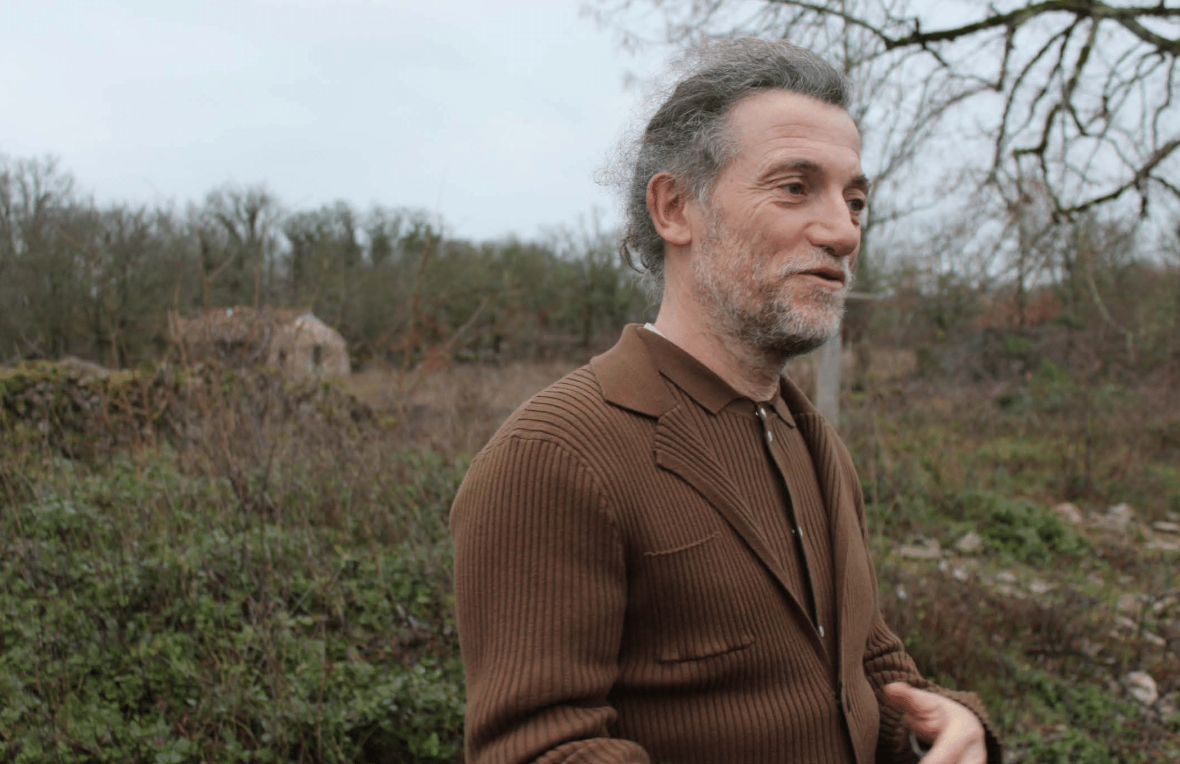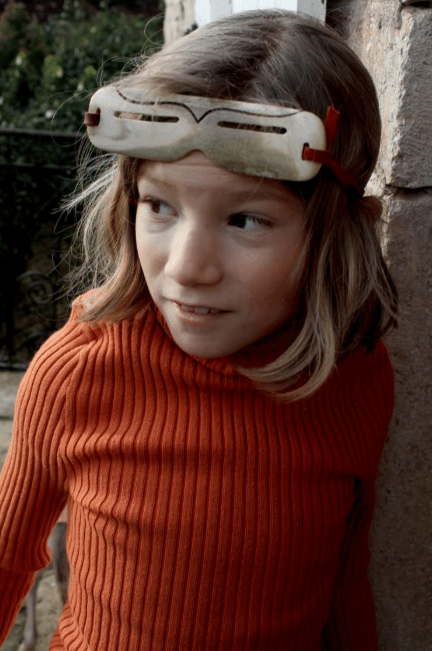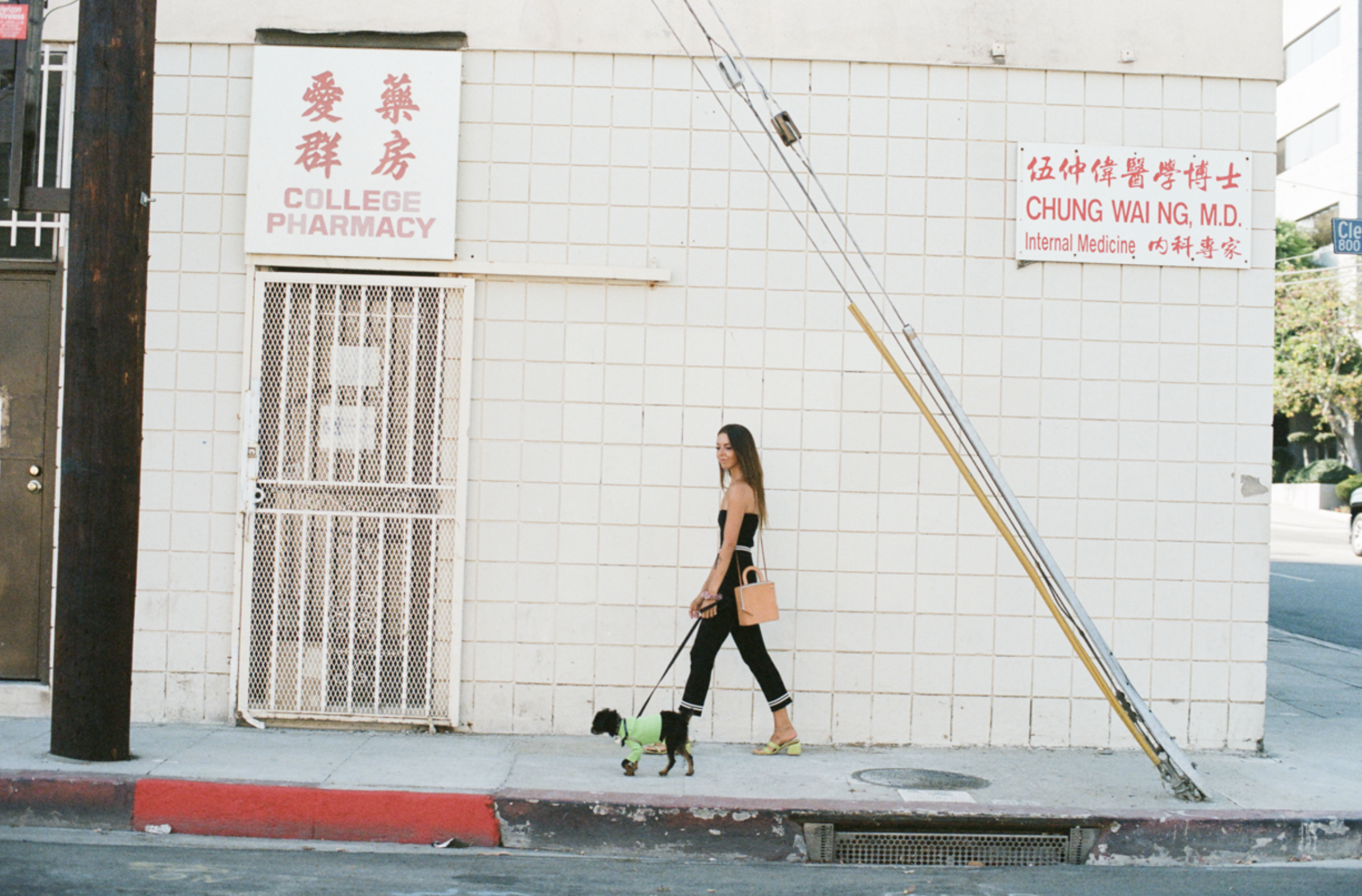Landscape paintings interspersed with religious art cover much of the green walls of the dining room, in which designer Lara Morabito studies and works. Several are her own works, each capturing a vista's color and light.
"I approach everything like a painting," Lara says. "I start with the infrastructure, and then I layer. I cast broad strokes. If you were painting something more impressionist, you would have smaller movements. But my movements are broad."
You can see this vision reflected in her garden and estate design projects. She starts each project with a walk-through, examining the landscape and assessing, among other things, its natural rhythms, light patterns, and focal points. From that, she produces a watercolor sketch to help her clients visualize. She'll even go so far as to spend a night or two onsite to understand better how light and shadows fall across the property.
Part of that comes from her appreciation of Renaissance art. Her family spent nearly two years in Tuscany, where she was exposed to art in Florence while studying garden design.
"I would say my aesthetic has a very strong Renaissance and French influence," says Lara. "There are the mathematical components of French design and the big, austere gestures of Renaissance gardens."
Another part comes from her unique upbringing. The daughter of Sicilian immigrants grew up on a large estate in southern Ohio, where her father gardened.
She taps into that inspiration and heritage with every project—large or small—she works on between Washington, D.C., and California.
Lara took time to chat with me about those influences, how she got started, her most memorable project, challenges, advice for budding designers, and more.
Tell us about your background.
My grandparents were Sicilian immigrants who landed in Ohio. Their families came because there was a lot of building during the Industrial Revolution in Cleveland. Rockefeller owned a lot of land, and they were looking for stone workers and masons, so many of them came over from Italy.
My father's family came from Ucria, a small mountain town outside Mount Etna. My mother's family is from the Palermo area but also Taormina and Termini Imerese.
After years of hard work on construction sites and supplying building materials, her family was sound enough to purchase land.
We grew up adjacent to Cyrus Eaton and his vast ranch just south of Cleveland. There was a natural lake surrounded by farmland. Most of the houses around the lake were owned by family and friends.
By the time I was born in '62, there were 10 family homes. So I grew up with my aunt and uncle across the street, my cousins down the street, my grandparents, another aunt and uncle.
It was very unique. I didn't know that other people didn't live this way. My father and the family grew their own vegetables, cooked sauce on Sundays, and made meatballs and Milanese. Everything flew back and forth between houses; there was an open-door policy. There was mandolin playing, opera, and singing—kind of amazing.
How did that environment shape your passion for garden design?
I am a very linear thinker, which might be unusual for a designer or creative. Early on, I understood patterns in the vegetable gardens in neat rows, how they intersected, and how plants were planted together to help each other thrive; for instance, you always grow tomatoes with basil. My father would say, "Lara, think about what you put in the sauce and how you cook. That's how you grow your vegetables."
I was an early student, and my dad was really the gardener more than my mother. The way my family cultivated the land, nothing went to waste. We never bought mulch; leaves became compost that fed the garden.
Cleveland's a rough environment—not ideal for growing anything. Winters are long, and there is practically no sunlight from November to April. But as soon as the growing season started, my father made the best of it.
I learned under harsh conditions how to grow things. It just was second nature to me. I remember my father struggling over a fig tree somebody brought from Sicily. He wanted that tree to live. I watched him put it in special conditions and protect it in the garden, netting it and heavily packing soil around it.
I had no formal education in garden design. Everything I knew when I started my business, I learned from my family.
How did you get started?
To be a garden designer, you have to be a gardener. And I'm sure many would disagree with me. But if you don't understand a garden, I can't even begin to think of how you'd really design one practically. So I did.
I started a garden when I was married and had children. My mother passed away when I was pregnant with my youngest. So I went to her garden, took her roses out, and brought them to D.C., where I raised my children and started my own garden from scratch with beautiful fertile soil and long growing periods. It was nirvana for me compared to the growing conditions where I grew up.
I learned on that three-quarters-acre piece of land. It was my laboratory, and it's how I informed my aesthetic.
Tell us more about that aesthetic.
It nods to Renaissance and French gardens; Italian gardens tend to be minimal. As much as I love a proper English garden, it's too messy for me. It's hard for me to embrace it. I can design areas of the garden that are wild, but they have to be judiciously arranged.
And lighting is everything. Everything. If you don't understand the light of a garden or how the piece of land you're working on works in the garden, you're really sunk.
I always spend a night or two in the house of the garden I designed before I start designing it so I can understand light. It's one thing to say, "South-facing, you have a sunset," or whatever the situation would be. But it's something else entirely to experience the light from inside the house. For me, that informs the design on the outside. I'm not going to block windows; vistas and axes are very important, and it's important that you appreciate them from inside the house.
In the garden, I want to play on shadows as much as possible. If it's a south-facing garden, I'm going to create space between the formal entry to the house so I can cast long shadows in the winter when not much is in bloom between the house and the first set of trees to establish the infrastructure of the garden.
Can you share a memorable project and what made it special?
It will forever be an estate called the Reach. It was the first really large landscape where someone just said, "Lara, do what you think you need to do." And the owner is very kind, intelligent, and artistic, with a clean aesthetic. All of his homes are spectacular.
Somehow, he recognized something in my work that appealed to him. He sat in one of my gardens and asked me to design his. And that leap of faith in me, that free reign, unlocked my real potential.
I spent six months studying before I prepared a concept design for him. If he had been more hands-on—because I respect him and his aesthetic—I would have stayed more in a box and presented him with things I thought he wanted. But because he gave it to me, it's purely my vision.
I once told somebody, "It'd be like if you hired a painter and said, 'Paint me this painting, but these are the colors you have to use. These are the shapes you have to use. This is how big it's going to be.' And then you say, 'I want this. I don't want that. Take that out. Oh no, I don't like this. No, I like more of that, more of these blues and purples.' Well, then, you've no longer hired an artist. And he recognized that.
The garden breathes; it's very peaceful. It is very French in its geometrics and very Italian in the height and drama yet minimalist, as is the house, which Hugh Newell Jacobsen designed. It's on a tributary to the Chesapeake Bay on one side and agricultural fields on the other.
I stayed in this house for about a week before I started designing, And I really got to understand the light and how it worked. It played off the house windows, which are set very low.
I also got to understand what the garden needed. There was a row of old holly trees, about 20 years old, and a row of Bartlett pear trees, about 20 years old, in the front and on the side of the house. And I took everything out, drove down to the end of the long driveway, maybe three-quarters of a mile, and got sick. I was like, "Wait, what did I just do? I just robbed the land." It had trees on the waterside but nothing in the front. But it allowed me to start fresh.
What are some common challenges, and how do you overcome them?
For a long time, I thought I could beat Mother Nature. I thought I could manipulate her and do what I wanted her to do. That was a big learning curve for me.
There's a native flower, a type of verbena, that I really love to use in California. And we look at these wildfires; a lot of that comes from invasive non-native plants. I've always been a stickler for using what's local. I don't try to shove a Mediterranean plant in a wet environment.
I kept putting the verbena in the ground because it's supposed to work, but it doesn't want to because it doesn't like the coastal fog and gets mildew, which infects everything else. I think I invested $20,000 in this plant for a client who agreed, and it just didn't work.
There are so many challenges. Another is moving water. Moving water is so important. If you don't understand how water can affect a garden, you're not doing a good job because it is just as dangerous, if not more dangerous, than fire.
What advice would you give to someone just starting in design?
Be a gardener. If garden design is what you want to do, you have to be a gardener first. You have to work the land, understand the land, and understand plants before you can even begin to design.
A garden designer needs to implement all the back of the house. Nobody likes to talk about things like drainage, irrigation, conduits for lighting, permitting, and topography. So much goes into the actual infrastructure before you even stick a shovel in the ground.
So, if you're not a gardener and don't want to be a gardener, be an architect. Do the mechanics and understand the engineering of walls and steps, how to move water, and how to build water features. But if you want to be a garden designer, if you really want to design the garden itself, be a gardener.
What is your overarching goal with each project?
To make people happy when they come home. I get such a charge out of people calling me four or five years later and saying, "I'm so happy to come home every day." Just seeing how it affects a family… That's my goal: making it work for them.
If you enjoyed this article, consider subscribing to my newsletter for more content and updates!

